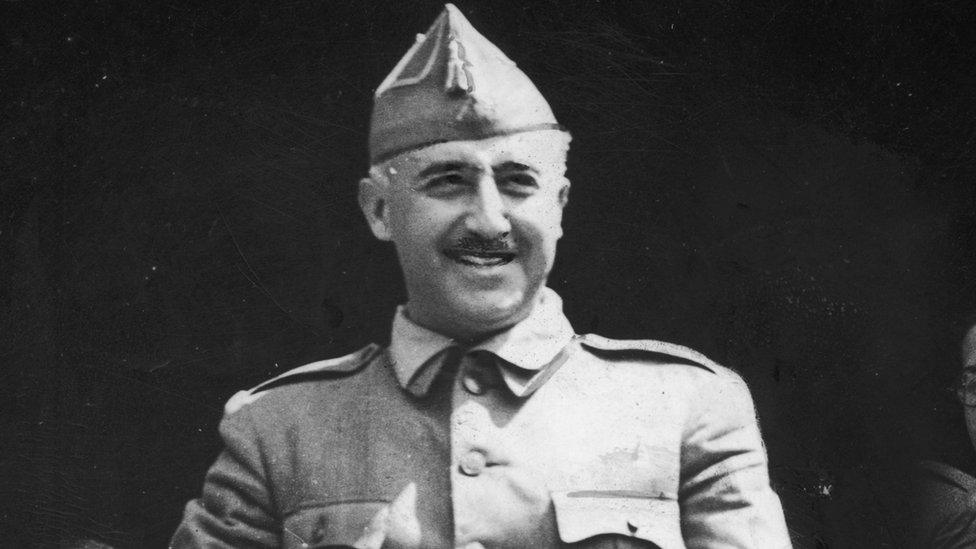Primo de Rivera: Spain exhumes fascist Falange leader
- Published
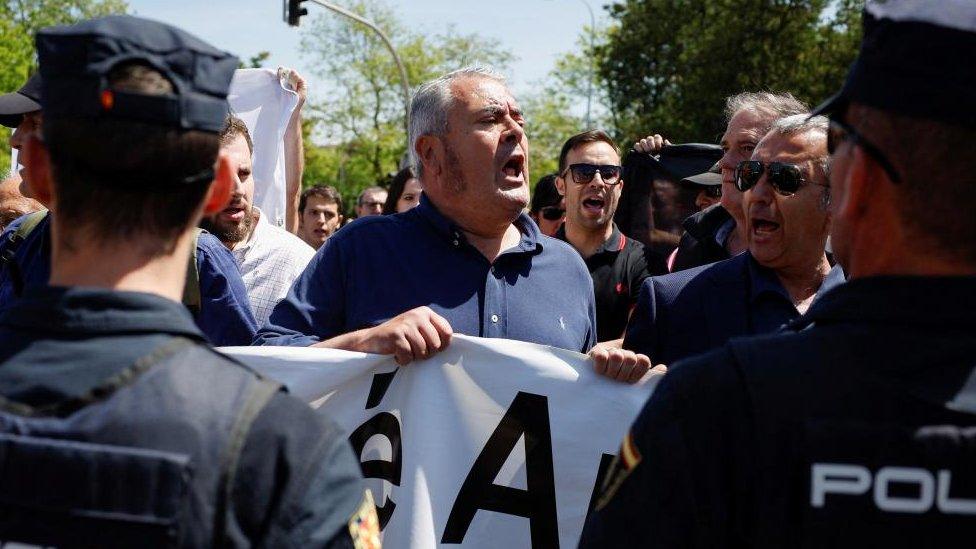
Primo de Rivera's modern-day supporters clashed with police
The remains of Spanish fascist leader José Antonio Primo de Rivera have been exhumed from a mausoleum and moved to a less-prominent cemetery in Madrid.
The move is part of an effort by the government to tackle the legacy of the country's civil war and dictatorship.
Primo de Rivera was executed at the start of the 1936-1939 conflict, over his links to rebels who had carried out a coup against the elected government.
His modern-day supporters clashed with police outside the cemetery.
"The exhumation of Primo de Rivera is good news for democracy," tweeted Ione Belarra, minister of social rights in Spain's leftist coalition government.
"The fascists have to be taken out of mausoleums and off the streets," she added.
Primo de Rivera's body was buried in four other sites, before being moved in 1959 to the Valley of Cuelgamuros (previously the Valley of the Fallen), a huge mausoleum in the mountains north of Madrid.
The structure was built by the dictator Gen Francisco Franco, who was also buried there after his death in 1975.
Both men were interred near the main altar of the monument's basilica. After a legal battle, Franco was exhumed in 2019 by the then-Socialist government.
The exhumation of Primo de Rivera follows last year's approval of the government's Democratic Memory Law, which seeks to remove Francoist symbols from public spaces and ensure that figures linked to the regime are not glorified.
The law specifically states that no individual should remain buried in a "prominent position" on the Cuelgamuros site.
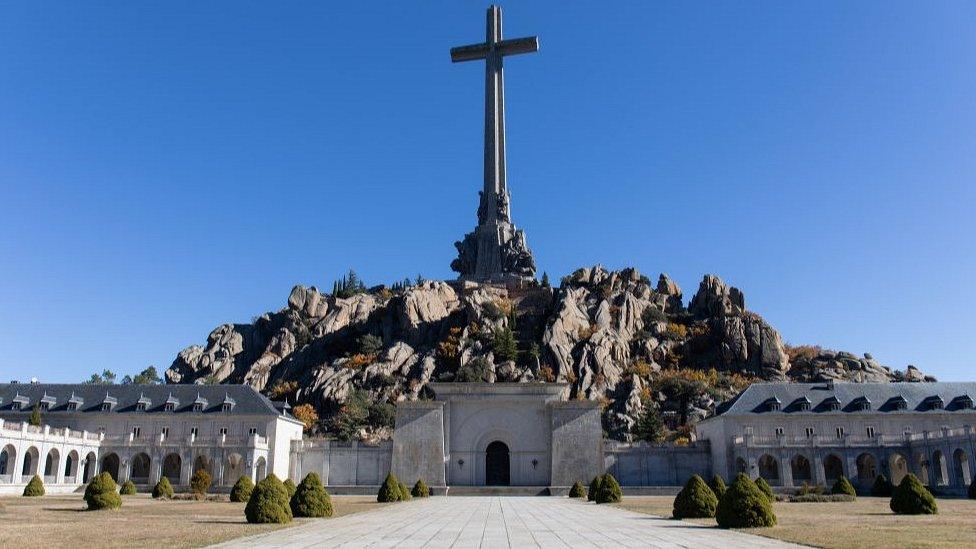
Republican prisoners of war were forced to build the memorial
The exhumation, which took place on the 120th anniversary of Primo de Rivera's birth, began early on Monday morning and was carried out without media coverage.
A group of people linked to the Primo de Rivera family later attended the site and witnessed the remains being taken away in a hearse - to be reburied in San Isidro Catholic cemetery, in southern Madrid.
There were several arrests during the clashes between Primo de Rivera's supporters and police.
The family of Primo de Rivera had rejected the government's offer to move his remains to another part of Cuelgamuros because of plans to turn the site into a civic cemetery.
Instead, they proposed that he be transferred to San Isidro in order to obey a wish in his will to be buried on Catholic "blessed ground".
His brother, Miguel, a minister in the Franco regime, and sister, Pilar, who founded the female branch of the Falange, are also buried in San Isidro cemetery. Their father, Miguel Primo de Rivera, governed Spain as a dictator from 1923-1930.
Cuelgamuros has been the most visible and notorious symbol of the Franco regime.
It was in theory a monument to all those who died in the civil war - and around 34,000 victims from both sides are buried in its crypts. But it was built by anti-Fascist Republican prisoners, and its architectural links to Franco's National-Catholic ideology - it is crowned with a 150m stone cross - have seen it closely associated with the regime.
Félix Bolaños, minister for the prime minister's office, said Monday's exhumation went "one step further" in converting the monument into a site that did not glorify the dictatorship.
According to the Democratic Memory Law, the community of Benedictine monks which currently manages the Cuelgamuros site will have to leave. The community's priory head - who sought to block the 2019 exhumation of Franco - has said that "it will not be easy" to remove them.
The political opposition has criticised the exhumation, casting it as a ploy by the prime minister to mobilise voters ahead of May's local elections.
Madrid's mayor said the move interested "all those who understand politics as opening up the wounds of the past rather than trying to create a future for all of us."
Related topics
- Published15 July 2018
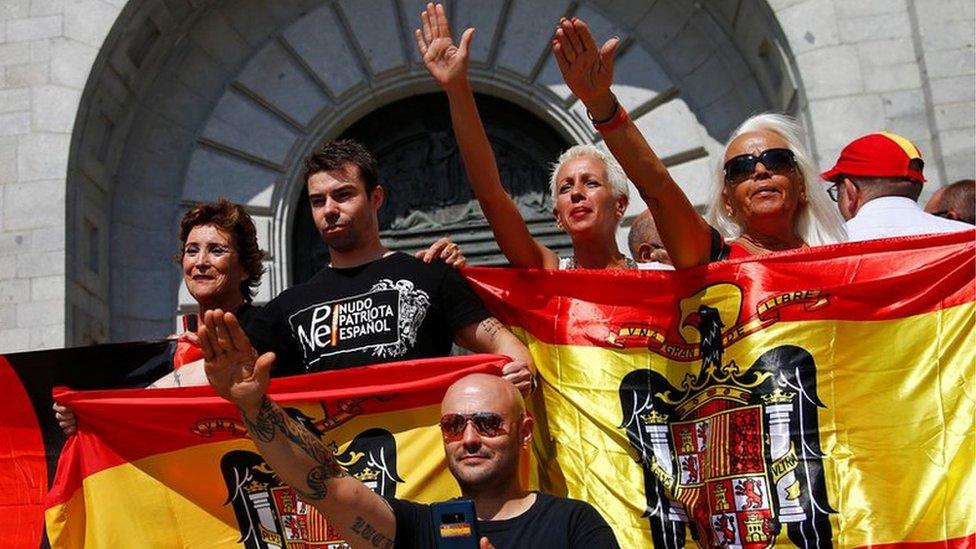
- Published12 March 2018
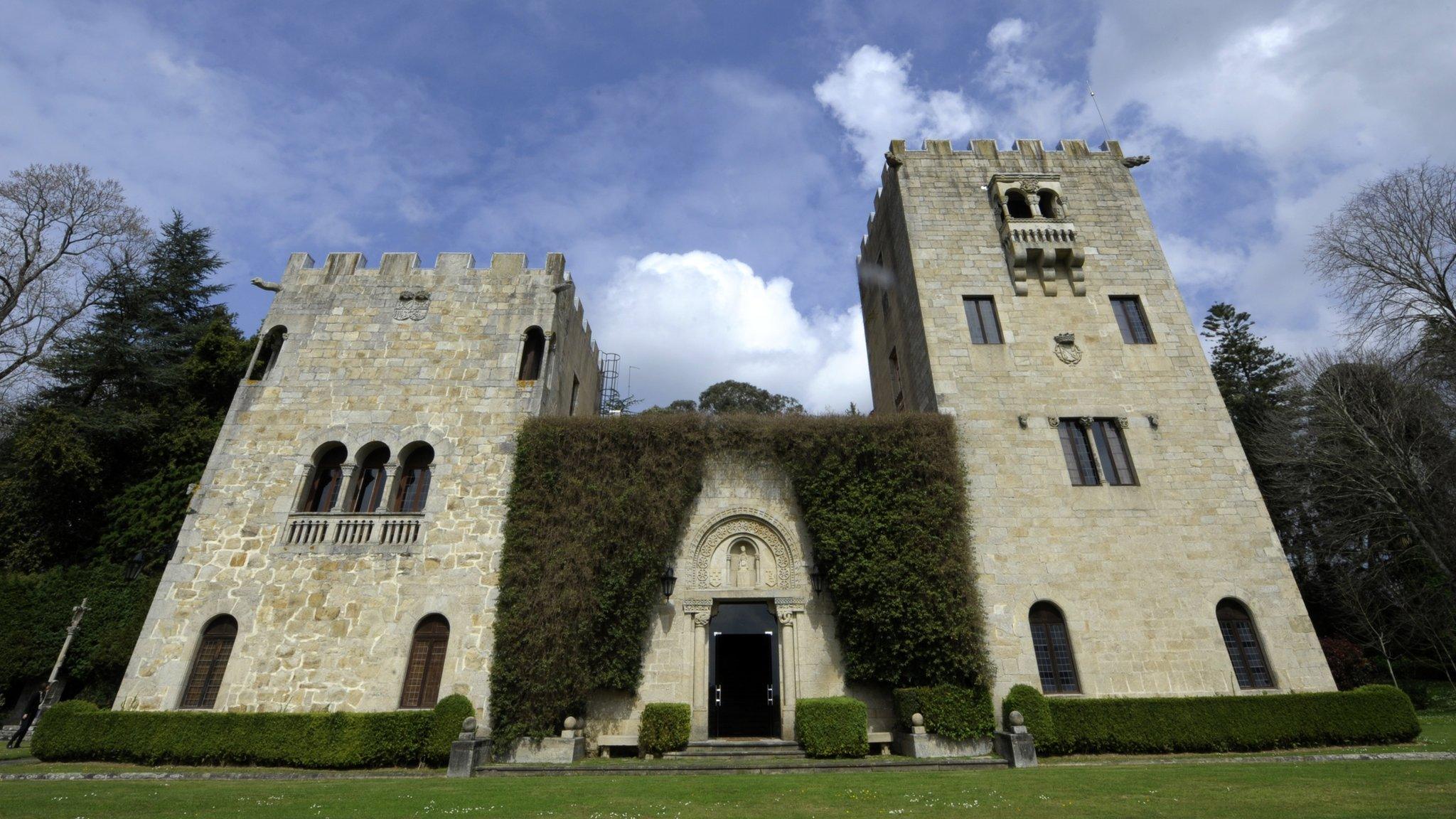
- Published20 November 2015
